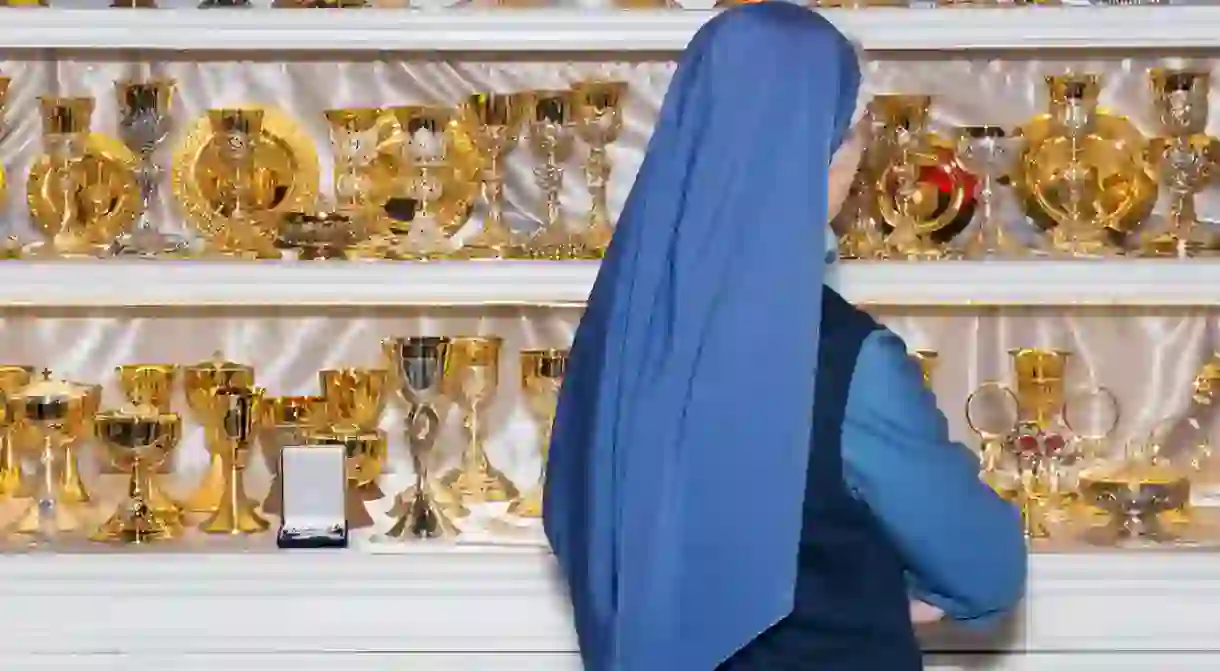Inside Italy's Multi-Billion Dollar Religious Fashion Industry

In spite of the often ornate, decorative and highly varied nature of religious clothes, these commercial elements have never formed a crucial part of the religious style narrative. Priests may take a vow of poverty, but holy fashion is worth more than its weight in gold. We caught up with photographer Louis De Belle as he takes us inside the profane world of the industry’s biggest trade fair.
Founded in 1989 in Vicenza, The International Exhibition of Church Furnishings, Liturgical Items and Religious Building Components – also known as Koinè – takes place over 4 days every 2 years. 20% of the visitors come from outside of Italy, and the fair welcomes 360 exhibitors from across 5 continents.

Koinè is the biggest religious trade fair in the world, representing an industry that reportedly generates about $5 billion worth of revenue each year. In comparison, London Fashion Week generates a mere €322.1 million. At the heart of this commercially successful fair is the copious and wide reaching variety of new clothes and dress on offer. Half of the fair is dedicated to Church & Liturgy, enabling those in the industry to secure the latest styles and invest in luxury pieces. Fashion options ranges from religious pendants to clerical clothing and lavish vestments.
In his book Besides Faith, released April 2016,photographer Louis De Belle explores the juxtapositions and tensions inherent in Koinè. “I think a Church Trade Fair already represents quite a paradox on its own. Hence I didn’t have any particular expectation: trade fairs are about goods, products, sales and so on. I always thought about religion as a non-materialistic belief… at least Catholic religion. Yet, after this experience, I slightly changed opinion…” he told The Culture Trip.

Alongside different styles of dress, the fair prides itself on showcasing innovation in manufacturing “in line with the direction taken by the Vatican council II.” It’s a one-stop destination for those looking to stay ahead in religious wear, a surprise given that change and modernity are not traditionally the church’s most famous attributes.
For Louis, the surprise came from the props and ornaments as much as the garments. “Besides the electronic rosary and the glow in the dark jesus figurines, I was impressed by the big amount of lavishly decorated gadgets for the Mess / services. We all know them, but seeing rows of golden cups it’s quite different.”

The next Koinè is scheduled for 2017. In light of the burkini ban in France, religious dress has generated renewed interest. The public will be watching to see what the industry can supply to meet the new demands and scrutiny.



Follow Louis on instagram: @louisdebelle













